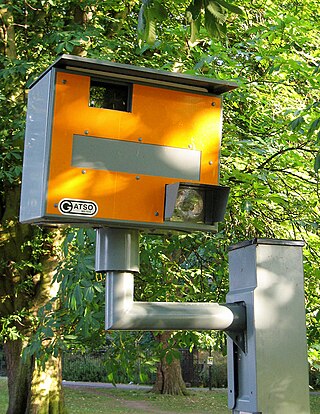
A traffic enforcement camera is a camera which may be mounted beside or over a road or installed in an enforcement vehicle to detect motoring offenses, including speeding, vehicles going through a red traffic light, vehicles going through a toll booth without paying, unauthorized use of a bus lane, or for recording vehicles inside a congestion charge area. It may be linked to an automated ticketing system.
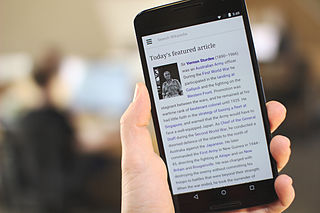
A smartphone, often simply called a phone, is a mobile device that combines the functionality of a traditional mobile phone with advanced computing capabilities. It typically has a touchscreen interface, allowing users to access a wide range of applications and services, such as web browsing, email, and social media, as well as multimedia playback and streaming. Smartphones have built-in cameras, GPS navigation, and support for various communication methods, including voice calls, text messaging, and internet-based messaging apps.

Traffic Message Channel (TMC) is a technology for delivering traffic and travel information to motor vehicle drivers. It is digitally coded using the ALERT C or TPEG protocol into Radio Data System (RDS) carried via conventional FM radio broadcasts. It can also be transmitted on Digital Audio Broadcasting or satellite radio. TMC allows silent delivery of dynamic information suitable for reproduction or display in the user's language without interrupting audio broadcast services. Both public and commercial services are operational in many countries. When data is integrated directly into a navigation system, traffic information can be used in the system's route calculation.

A radar detector is an electronic device used by motorists to detect if their speed is being monitored by police or law enforcement using a radar gun. Most radar detectors are used so the driver can reduce the car's speed before being ticketed for speeding. In general sense, only emitting technologies, like doppler RADAR, or LIDAR can be detected. Visual speed estimating techniques, like ANPR or VASCAR can not be detected in daytime, but technically vulnerable to detection at night, when IR spotlight is used. There are no reports that piezo sensors can be detected. LIDAR devices require an optical-band sensor, although many modern detectors include LIDAR sensors. Most of today's radar detectors detect signals across a variety of wavelength bands: usually X, K, and Ka. In Europe the Ku band is common as well. The past success of radar detectors was based on the fact that radio-wave beams can not be narrow-enough, so the detector usually senses stray and scattered radiation, giving the driver time to slow down. Based on a focused laser-beam, LIDAR technology does not suffer this shortcoming; however it requires precise aiming. Modern police radars incorporate formidable computing power, producing a minimum number of ultra-short pulses, reusing wide beams for multi-target measurement, which renders most detectors useless. But, mobile Internet allows GPS navigation devices to map police radar locations in real-time. These devices are also often called "radar detectors", while not necessary carrying an RF sensor.
Wayfinder was a wholly owned subsidiary of Vodafone specializing in creating mobile navigation systems for a number of platforms such as Symbian 2nd and 3rd edition, UIQ, Windows Mobile and some other smartphones. An external Bluetooth GPS receiver is required for non GPS enabled phones. On March 12, 2010, it was announced that Vodafone was closing the company and all employees would be let go.
Navteq Corporation was an American Chicago-based provider of geographic information system (GIS) data and a major provider of base electronic navigable maps. The company was acquired by Nokia in 2007–2008, and fully merged into Nokia in 2011 to form part of the Here business unit. The unit was subsequently sold to a consortium of German auto makers in 2016.
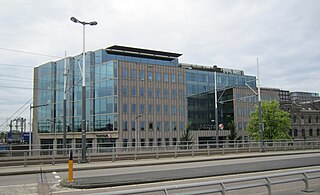
TomTom N.V. is a Dutch multinational developer and creator of location technology and consumer electronics. Founded in 1991 and headquartered in Amsterdam, TomTom released its first generation of satellite navigation devices to market in 2004. As of 2019 the company has over 4,500 employees worldwide and operations in 29 countries throughout Europe, Asia-Pacific, and the Americas.
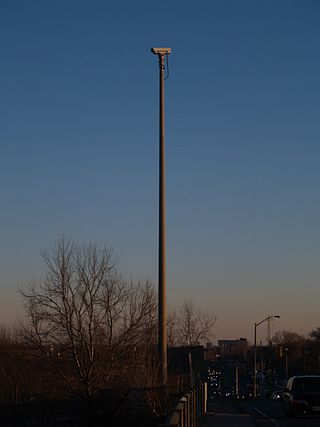
Traffic reporting is the near real-time distribution of information about road conditions such as traffic congestion, detours, and traffic collisions. The reports help drivers anticipate and avoid traffic problems. Traffic reports, especially in cities, may also report on major delays to mass transit that does not necessarily involve roads. In addition to periodic broadcast reports, traffic information can be transmitted to GPS units, smartphones, and personal computers.

The Nokia 6110 Navigator is a mobile phone made by Nokia, announced on 12 February 2007. It has been available since June 2007. It runs on Symbian OS v9.2 with a S60 3rd Edition FP1 user interface. It is not to be confused with the 1997/98 Nokia 6110. The Nokia 6110 Navigator includes pre-loaded navigation maps.

Navigon GmbH was a Würzburg, Germany-based manufacturer of GPS devices and GPS navigation software. The company was privately owned, until in June 2011, it was announced that Navigon was to be acquired by Garmin and become a subsidiary of the company. With effect from October 31, 2011, Navigon has changed its legal entity from corporation (Aktiengesellschaft) to GmbH.

Here Technologies is a Dutch multinational group specialized in mapping technologies, location data, and related automotive services to individuals and companies. It is majority-owned by a consortium of German automotive companies and American semiconductor company Intel whilst other companies also own minority stakes. Its roots date back to U.S.-based Navteq in 1985, which was acquired by Finland-based Nokia in 2007. Here is currently based in The Netherlands.

Foursquare City Guide, commonly known as Foursquare, is a local search-and-discovery mobile app developed by Foursquare Labs Inc. The app provides personalized recommendations of places to go near a user's current location based on users' previous browsing history and check-in history.
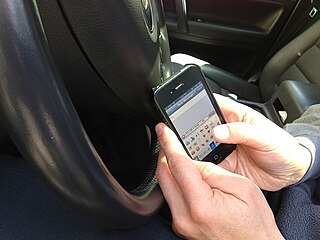
Texting while driving, also called texting and driving, is the act of composing, sending, or reading text messages on a mobile phone while operating a motor vehicle. Texting while driving is considered extremely dangerous by many people, including authorities, and in some places has either been outlawed or restricted. As a form of distracted driving, texting while driving significantly increases the chances that a driver will be involved in a motor vehicle accident.

Wikitude was a mobile augmented reality (AR) technology provider based in Salzburg, Austria. Founded in 2008, Wikitude initially focused on providing location-based augmented reality experiences through the Wikitude World Browser App. In 2012, the company restructured its proposition by launching the Wikitude SDK, a development framework that uses image recognition and tracking, and geolocation technology.
Waze Mobile Ltd, doing business as Waze, formerly FreeMap Israel, is a subsidiary company of Google that provides satellite navigation software on smartphones and other computers that support the Global Positioning System (GPS). In addition to turn-by-turn navigation, it incorporates user-submitted travel times and route details while downloading location-dependent information over a cellular network. Waze describes its application as a community-driven initiative that is free to download and use.

Speed limits are enforced on most public roadways by authorities, with the purpose to improve driver compliance with speed limits. Methods used include roadside speed traps set up and operated by the police and automated roadside 'speed camera' systems, which may incorporate the use of an automatic number plate recognition system. Traditionally, police officers used stopwatches to measure the time taken for a vehicle to cover a known distance. More recently, radar guns and automated in-vehicle systems have come into use.

Sygic is a Slovak company of global automotive navigation systems for mobile phones and tablets. The company was founded in 2004 and is headquartered in Bratislava, Slovakia. It became the first company to offer navigation for iPhone and second for Android. In 2015 Sygic reached milestone of 100 million downloads of its navigation app.
GyPSii is a provider of geosocial networking applications and services for the iPhone, iPod, iPad, BlackBerry OS, Android and Java-based phones, Symbian S60 and S40, Windows Mobile and MID notebooks. The company is headquartered in Amsterdam, Netherlands, with offices in Asia and the United States.

The Guardian Project is a global collective of software developers, designers, advocates, activists, and trainers who develop open-source mobile security software and operating system enhancements. They also create customized mobile devices to help individuals communicate more freely and protect themselves from intrusion and monitoring. The effort specifically focuses on users who live or work in high-risk situations and who often face constant surveillance and intrusion attempts into their mobile devices and communication streams.
Flitsmeister is a Dutch mobile app for Android and iOS that warns its users of speed cameras and other traffic obstacles. It has about 1.7 million active users as of May 2020, which the company defines as users who open the app more than twenty times a month on average.














